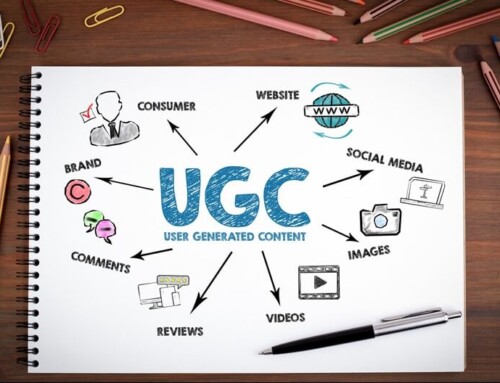In the high-stakes world of B2B marketing, decision-makers are the ultimate prize. These stakeholders hold the keys to lucrative contracts and partnerships, making them the primary target for savvy sellers. Yet, despite their crucial role, most marketing copy results in a disconnect between intent and impact.
One study found that 54% of decision-makers dedicate an hour or more to consuming thought leadership content, seeking insights to guide their purchasing choices. However, the same group reports that over half of this content fails to deliver valuable insights. (1) This statistic reveals a critical gap in B2B marketing effectiveness, leaving a trail of missed opportunities and wasted resources.
The implications of this disconnect are far-reaching. When marketing copy misses the mark, it’s not just a matter of unread emails, low engagement on social media, or abandoned blog posts. It’s about lost connections, missed chances to showcase expertise and unrealized business potential.
Let’s explore the common misconceptions that lead to ineffective marketing copy and the strategies to overcome them.
1-The Myth of the Lone Decision-maker
One misconception in B2B marketing that still persists is the idea of a single, all-powerful decision-maker. This oversimplification can lead to content that misses the mark entirely.
The Reality: Modern B2B decisions are rarely made in isolation. Instead, they involve a complex web of stakeholders, each with their own priorities, concerns, and influence on the final decision. A 2023 study by Raconteur found the average number of stakeholders involved in a purchase decision was roughly 11 people (2). The study also noted that for complex decisions, more than 16 people could contribute to the buying group’s decision. This means that as many as 20 people could be part of the decision-making process.
The Impact: Content that speaks to only one type of decision-maker risks alienating other crucial stakeholders in the buying process. It may also fail to address the diverse range of concerns that influence a collective decision.
The Solution: Develop a multi-faceted content strategy that addresses various stakeholders’ needs and pain points. This might include:
- Creating role-specific content that speaks directly to the concerns of different team members (e.g., C-Suites, Head of Departments, Directors, Managers)
- Developing materials that facilitate internal discussions and consensus-building among buying team members
- Providing tools and resources that help champions within the organization make a case for your solution to their colleagues
Acknowledging and catering to the complexity of B2B decision-making teams makes your content more relevant and valuable to the buying group.
2-The Fallacy of the Universal Buyer Journey
Another common pitfall is assuming all potential customers follow the same linear path from awareness to purchase.
The Reality: B2B buyer journeys are increasingly non-linear and unpredictable. Research by Gartner revealed that 75% of B2B buyers prefer a rep-free sales experience, intentionally opting to be self-reliant(3). Additionally, each stakeholder may bring in five pieces of information to the decision-making table for discussion(8).
The Impact: Content strategies built around a rigid, predetermined buyer journey often fail to meet prospects where they are in their unique decision-making process. This can result in missed opportunities to engage and influence potential customers at critical moments.
The Solution: Adopt a more flexible, customer-centric approach to content creation:
- Develop a diverse range of content types that cater to different stages of the buying process, from early awareness to final decision-making
- Implement robust analytics to understand how your audience actually interacts with your content rather than how you think they should
- Use AI and machine learning to personalize content recommendations based on individual user behavior and preferences
- Create interactive content that allows users to self-guide their journey, accessing the information most relevant to their current needs
By embracing the complexity and variability of modern B2B buyer journeys, you can create a content ecosystem that supports and nurtures prospects regardless of their unique path to purchase.
3-The One-Size-Fits-All Content Trap
Many marketers fall into the trap of creating generic content in an attempt to appeal to a broad audience, resulting in materials that resonate with no one.
The Reality: B2B decision-makers seek highly relevant, personalized content that speaks directly to their specific challenges and industry context. Various studies indicate B2B buyers are more likely to engage with brands that offer personalized experiences. One study found that 80% of B2B buyers are more likely to consider a brand that offers personalized content.(4). What’s more, a Content Marketing Institute Survey revealed that personalized content has an influence on decision-making behavior. 78% of B2B buyers stated personalized content had some impact, while nearly half indicated it had a significant impact on their buying choice.
The Impact: Generic content fails to capture decision-makers’ attention and doesn’t provide the specific insights they need to move forward in their buying process. This can lead to low engagement rates and missed opportunities to establish thought leadership.
The Solution: Embrace hyper-personalization in your content strategy:
- Leverage data and AI to create dynamically personalized content experiences that adapt to individual user preferences and behaviors
- Develop industry-specific content that addresses the unique challenges and regulatory environments of different sectors
- Create modular content that can be easily customized for different audience segments without starting from scratch each time
- Implement account-based marketing (ABM) strategies that tailor content to specific high-value target accounts
Moving beyond one-size-fits-all content, you can create materials that truly resonate with your audience and demonstrate a deep understanding of their needs and contexts.
4-Underestimating the Depth of Online Research
Many marketers underestimate the extent to which B2B buying teams conduct independent online research before engaging with sales representatives.
The Reality: B2B buyers spend more time researching solutions independently online than ever. A FocusVision survey found that B2B buyers consume an average of 13 pieces of content before making a purchase decision. The content breaks down to eight seller-created pieces and five from third parties.(5).
The Impact: Failing to provide comprehensive, high-quality content across multiple channels can result in potential customers forming opinions and shortlists without your input, potentially excluding your solution from consideration.
The Solution: Develop a robust, omnichannel content strategy that supports in-depth research:
- Create a diverse range of content types, including whitepapers, case studies, webinars, videos, podcasts, and interactive tools, to cater to different learning preferences and research styles
- Optimize your content for search engines to ensure it’s discoverable when buyers are conducting independent research
- Leverage third-party platforms and industry publications to extend your reach beyond your own website
- Develop thought leadership content that addresses broader industry trends and challenges, positioning your brand as a trusted advisor rather than just a vendor
By providing a wealth of valuable, easily accessible content, you can ensure that your brand is well-represented throughout the buyer’s independent research process.
5-The Disconnect Between Marketing Language and Sales Messaging
There’s often a significant gap between the language used in marketing materials and the messaging that will resonate in actual sales conversations.
The Reality: While marketing content often focuses on high-level benefits and brand positioning, sales conversations are more specific, addressing concrete pain points and ROI. This disconnect can create confusion and erode trust with potential customers.
The Impact: When marketing content doesn’t align with sales messaging, it can lead to a disjointed customer experience, potentially undermining the credibility of both marketing and sales efforts.
The Solution: Bridge the gap between marketing and sales through collaborative content creation:
- Involve sales teams in the content creation process to ensure marketing materials address the real questions and concerns that come up in sales conversations
- Develop sales enablement content that helps sales representatives effectively use and customize marketing materials in their interactions with prospects
- Create content that directly addresses common objections and questions encountered during the sales process
- Implement regular feedback loops between marketing and sales to continuously refine and align messaging
By ensuring consistency between marketing content and sales conversations, you create a seamless experience for potential customers, building trust and credibility throughout the buying process.
6-Overlooking the Power of Peer Influence
Many B2B marketers focus solely on promoting their own message, overlooking the significant influence that peers and industry experts have on decision-makers.
The Reality: B2B buyers place high value on peer recommendations and expert opinions. Various studies show review sites influence B2B purchasing decisions(6). Clutch reported that 94% of B2B buyers use online reviews, while G2 revealed that 84% of B2B decision-makers rely on review sites. Meanwhile, TrustRadius found that 55% of B2B buyers consult review sites before making a purchase.
The Impact: Failing to incorporate social proof and expert endorsements in your content strategy can result in missed opportunities to build credibility and trust with potential customers.
The Solution: Harness the power of peer influence in your content strategy:
- Develop a robust case study program that showcases real-world success stories from your customers
- Collaborate with industry influencers and thought leaders to create co-branded content
- Encourage and facilitate customer reviews on relevant platforms rather than just collecting and publishing testimonials
- Create content that fosters community and peer-to-peer learning among your customers
By leveraging peer influence, you can create content that not only informs but also validates your solution in the eyes of potential customers.
7-Neglecting the Emotional Aspect of B2B Decision-making
There’s a common misconception that B2B decisions are purely rational. This leads to content that focuses solely on logic and facts while ignoring emotional factors.
The Reality: While B2B decisions certainly involve rational analysis, emotions play a significant role. Research by Google and CEB found that B2B customers are significantly more emotionally connected to their vendors and service providers than general consumers(7).
The Impact: Content that fails to engage on an emotional level misses an opportunity to create deeper connections with decision-makers and differentiate from competitors who may offer similar rational benefits.
The Solution: Incorporate emotional appeal into your B2B content strategy:
- Tell compelling stories that go beyond features and benefits to illustrate how your solution impacts people and organizations
- Address the personal goals and fears of decision-makers, such as career advancement or risk mitigation
- Use visuals and design elements that evoke the desired emotional response
- Highlight the human side of your brand, showcasing your company culture and values
Balancing rational arguments with emotional appeal allows you to create content that resonates more deeply with B2B decision-makers.
Elevating Your B2B Content Strategy
Creating B2B marketing content that truly resonates with decision-makers requires a nuanced understanding of the complex realities of modern business decision-making. By addressing these common misconceptions and implementing the suggested solutions, you can develop content strategies that capture attention and provide genuine value throughout the buying process.
Remember, the key to success lies in continually listening to your audience, adapting to their needs, and providing content that addresses their specific challenges and concerns. By doing so, you can position your brand as a trusted partner rather than just another vendor, ultimately driving meaningful engagement and business growth.
For more information about planning a corporate meeting to build a cohesive sales and marketing team, contact Gavel International.
_______________________
SOURCE(S):
1 https://www.edelman.com/sites/g/files/aatuss191/files/2021-09/2021_EdelmanLinkedIn_B2B_ThoughtLeadershipImpact.pdf
2 https://www.raconteur.net/leadership/why-decision-making-is-more-complex-than-ever
3 https://www.gartner.com/en/sales/insights/b2b-buying-journey
4 https://www.linkedin.com/pulse/power-personalization-b2b-marketing-part-1-content-long-tsatis
5 https://martech.org/b2b-buyers-consume-an-average-of-13-content-pieces-before-deciding-on-a-vendor/
6 https://b2bsaasreviews.com/state-of-b2b-software-reviews-2023/#:~:text=G2%20found%20that%2084%25%20of,to%20inform%20their%20purchase%20decisions.
7 https://www.thinkwithgoogle.com/consumer-insights/consumer-trends/promotion-emotion-b2b/
8 https://www.mediafly.com/blog/why-60-of-buyers-dont-rely-on-b2b-sales-reps/
This article was last updated on April 24, 2025
- Train LinkedIn’s Algorithm for Elevated Sales Prospecting - October 13, 2025
- Can Your Organization Afford a Dysfunctional Superstar? - October 6, 2025
- Take Action on Organizational Values to Improve Company Culture - September 8, 2025






